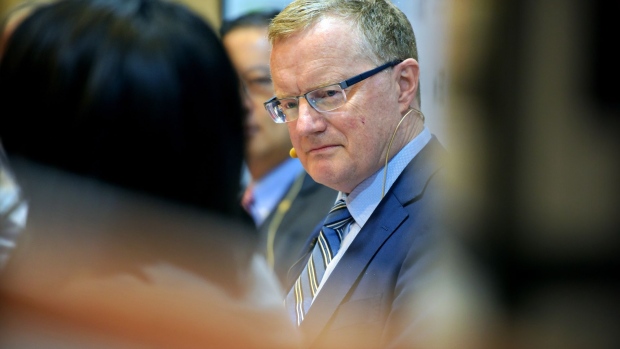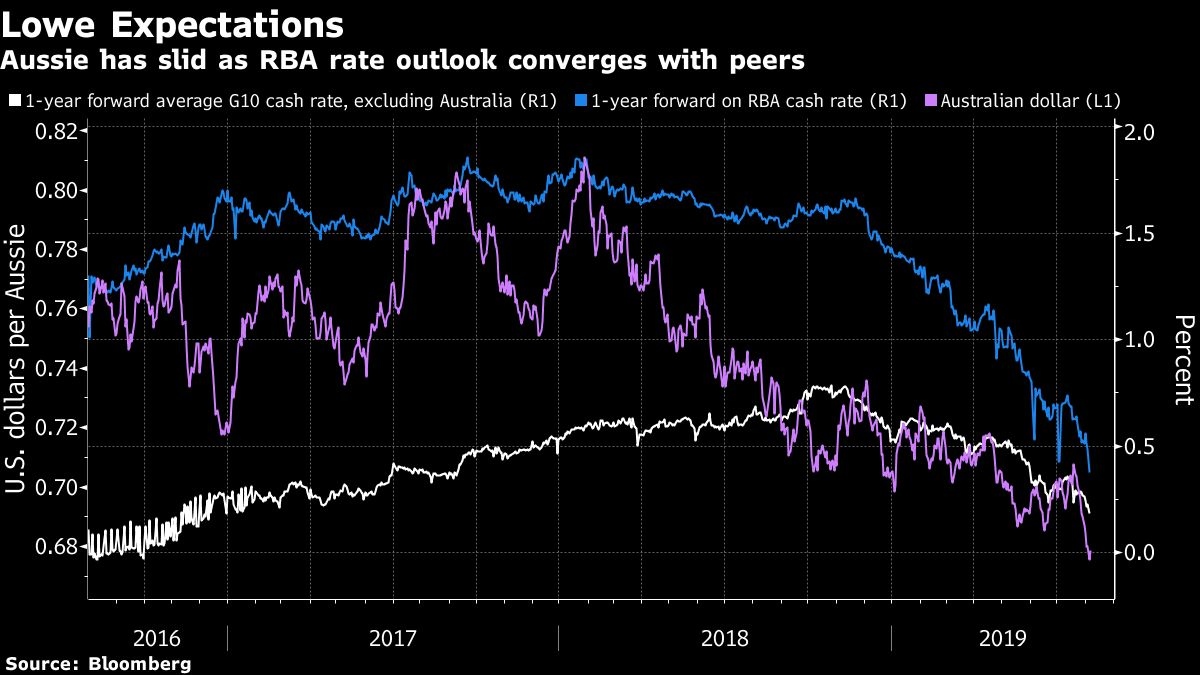Aug 6, 2019
Australia holds key rate at 1% as currency slide offers stimulus
, Bloomberg News

Australia kept interest rates unchanged following back-to-back cuts that, combined with a massive escalation in the U.S.-China economic battle, helped push the currency to its lowest level in a decade.
Reserve Bank chief Philip Lowe and his board left the cash rate at one per cent -- as expected -- with the Aussie dollar’s more than three per cent fall since July’s cut aiding exporters and import-competing industries. The decision also saw the RBA trim this year’s economic growth forecast, and came against a tumultuous global backdrop as the U.S.-China trade war morphs into a currency showdown.
“It is reasonable to expect that an extended period of low interest rates will be required in Australia to make progress in reducing unemployment and achieve more assured progress towards the inflation target,” Governor Lowe said in a statement Tuesday. “The board will continue to monitor developments in the labor market closely and ease monetary policy further if needed.”

Australia’s economy has slowed sharply since the middle of last year as households struggling with record debt and weak income growth scale back spending. The central bank eased in June and July -- its first consecutive cuts since 2012 -- as it sought to put cash into consumers’ pockets via lower mortgage costs and drive down the local dollar.
“The Australian dollar is at its lowest level of recent times,” Lowe said. “Looking forward, growth in Australia is expected to strengthen gradually.”
The RBA reduced its economic growth forecast for this year by 25 basis points to 2.5% and reaffirmed next year’s at 2.75 per cent. The currency was little changed after the statement’s release.
What Bloomberg’s Economists Say
“We expect the RBA to leave the door open for further easing for some time. Some recent data points have been encouraging, but it will take time to deliver the RBA’s desired outcomes for unemployment and inflation. This is likely to keep rate-cut hopes alive well into 2020.”
-- Tamara Mast Henderson, Economist
The domestic picture has been eclipsed by dramatic international upheaval as the U.S. and China traded blows over exports and currencies: Washington hit Beijing with additional tariffs last week; China responded by banning purchases of American agricultural goods and letting the yuan slide through the key 7 level; then the U.S. designated China a currency manipulator.
The risk is the uncertainty unleashed by President Trump’s protectionist measures will see already cautious multinationals scrap investment plans altogether and start firing employees. Labor markets in the developed world, including Australia, have been a bright spot and major firms turning bearish could trigger a worldwide downturn.
“The persistent downside risks to the global economy combined with subdued inflation have led a number of central banks to reduce interest rates this year and further monetary easing is widely expected,” Lowe said.
Already, commodity prices have begun tumbling, with iron ore -- Australia’s largest export -- falling into a bear market as investors fret about the economic outlook.
‘Little Inroad’
Lowe has said he is prepared to do more with policy if the economy Down Under fails to fire. The RBA is hoping that the U.S. and China will pull back from the brink and that a combination of rate cuts, tax relief, a stabilizing housing market, government infrastructure and private firms’ investment plans will keep the local economy ticking over.
There has been “little inroad into the spare capacity in the labor market recently, with the unemployment rate having risen slightly,” the governor said. “Wages growth remains subdued and there is little upward pressure at present, with strong labor demand being met by more supply.”
Lowe is expected to address risks at home and abroad when he delivers his semi-annual testimony to a parliamentary panel in Canberra Friday; the RBA will also release its quarterly update of forecasts for economic growth, inflation and unemployment on the same day.